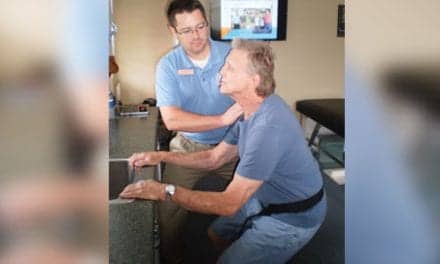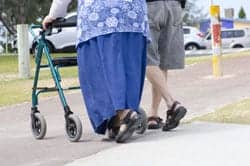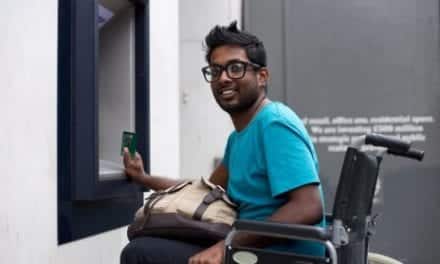Breathing, concentration, focus, and flow are four of the cornerstones of Pilates, a method of exercise and physical movement designed to stretch, strengthen, and balance the body. With systematic practice of specific exercises coupled with focused breathing patterns, Pilates has proven itself invaluable not only as a fitness endeavor, but also as an important adjunct to physical rehabilitation of all kinds.
The benefits of Pilates within the fitness industry have been well documented. As its popularity has soared in the last 10 years, we have seen a shift in its applications beyond the realm of pure fitness. More and more health care practitioners are using its principles and exercises for a variety of treatments. Because of the increasing numbers of health care practitioners who are acquiring comprehensive Pilates training, we also see an abundance of innovative applications using Pilates for therapeutic outcomes.
Pilates as a Therapeutic Modality. ?For many PTs, Pilates is a logical choice for a large variety of reasons based on individual practices and specialties. Pilates offers extreme versatility for strength and flexibility training, balance and proprioceptive re-education, motor learning, and many other therapeutic effects. This versatility is driving the shift in the rehabilitation industry toward using some aspect of Pilates for the attainment of patient goals.
As a school-based pediatric PT transitioning into private practice, I have seen a wide variety of both children and adults and have observed that many traditional therapy treatments focus primarily on using external techniques. Pilates, however, creates an environment that has a balance between internal (the patient) and external (the clinician) regulation. In my roles as a comprehensively trained Pilates teacher and PT, I have observed amazing outcomes in our clinic’s patients as a result of how Pilates challenges the active, passive, and control systems in each individual’s body.
Breathing Balance. ?Currently, an estimated one in 166 individuals in the United States is affected to some degree by autism. According to statistics from the US Department of Education and other governmental agencies, autism is growing at a startling rate of 10% to 17% per year. At this rate, the Autism Society of America estimates that the prevalence of autism could reach 4 million Americans in the next decade. Some support the idea that there may be a genetic predisposition to the disease. Others believe that environmental factors, inoculations, and food may be contributing causes. We may also be seeing elevated numbers as the definition of the autism spectrum has broadened and improved the accuracy of diagnosis.
In addition to the varying degrees of developmental disorders with which these children can present, behavioral issues they may exhibit include depression, attention and motivational deficits, sensory-processing dysfunction, or social and life-skills deficits. In my experience, the only consistent factor I see from one child to the next is an altered sensitivity (increased or decreased) to their nervous systems.
Some children with autism exhibit an “odd gait.” There is no official medical explanation for this, because there is no supposed link between autism and a child’s strength or proprioception. However, misplaced proprioception and lack of body awareness are definitely characteristics that show up in a great majority of autistic children.
Faced with treating gait-related diagnoses for children with autism-spectrum disorders, I had to find a way to incorporate activities to help organize them before working on their gait and motor skills. I returned to some of the sensory-integration concepts I learned while cotreating in the school system with sensory-integration specialists, and I began devising ways to use the Pilates equipment to get what I needed for my patients. I found that focusing on their vestibular and proprioceptive systems as a preparation activity created an environment for quality therapeutic intervention geared toward their motor or gait deficit. The organizing activities created a balance between boredom and subsequent loss of focus, and overstimulation leading to a sense of overwhelm. The most unexpected outcome was the carryover that these children’s parents and other practitioners were reporting in other activities.
Although the range of symptoms is vast and varies in terms of severity, many autistic children exhibit difficulty moving out of one focused task and into another. For some, the consistency and specificity of simple Pilates exercises presented in a particular sequence and done with specific movement patterns and transitional choreography can assist children in developing a gross-motor-exercise program with an emphasis on transitions. This helps them to methodically focus and refocus in order to transition from one exercise to another. It helps with both movement transitions and environment transitions, two of the biggest challenges that autistic children face.
Movements on Pilates equipment can be resisted, but even more importantly for autistic children, they can be assisted. This can help an autistic child attain a good mind-body connection whether they are aware of it or not. It helps them focus and concentrate on a task at hand, and that in turn creates better balance and awareness within their bodies.
In addition, I have used the Pilates Reformer and the jump board to provide a linear combination of vestibular and proprioceptive input. By loading the lightest spring on the Reformer and dropping the foot bar, I used one handle to pull and control the release of the carriage to create a linear translation effect in supine hook-lying position (we call it the “carriage slide”). Once the preparation was complete, I used similar applications to work on balance, proprioception, and core strength by having the children maintain specific positions while the same input was received.
Clinicians interested in using Pilates as a means of therapeutic intervention should seek comprehensive training to ensure they have all of the tools available to them to incorporate Pilates into any treatment plan. In addition to understanding that Pilates for rehabilitation is different from pure Pilates, it is imperative to understand that its application to special pediatric populations also requires a broad scope of knowledge encompassing social, emotional, environmental, and behavioral implications. Experience with special-needs children is key to drawing the link between Pilates and pediatric treatment modalities using the Pilates Method.
AN AWKWARD GAIT
A 4-year-old girl, referred for treatment of an “awkward gait,” came to therapy for a total of 11 sessions. She had not to date been definitively diagnosed with autism; her physician described her as a child with “autistic tendencies.” She was under the care of additional practitioners for clinic- and school-based occupational therapy, which included sensory-integration therapy. Her goals were to improve stability with walking, improve transitioning from one motor/gait activity to the next, decrease anxiety, and improve focus with age-appropriate gross motor skills.
During her first two sessions, she spent half the treatment time crying and clinging to her mother and the other half smiling blankly and not following single-step tasks from her mom or myself. By the third session, she began to calm in the environment and show interest in the equipment. We first initiated the jump-board activities for 3 minutes during this session, and to our amazement, she transitioned right into the gait-training work. At the next session, we added 2 minutes to the jump board for a total of 5, and added the carriage sliding for another 2 minutes. She transitioned beautifully between these two activities and initiated moving into the gait-training areas independently.
Her fifth treatment was problematic, as per her mother’s report, she was sick and did not want to do any activities besides sliding. However, by session six, she was back on track and we added both quadruped and seated core and balance work on the Reformer, as well as footwork. Then, we transitioned to gait training. The next five sessions included a combination of the previous treatments and the slow addition of home exercises (one per visit), for her mother to begin integrating into her “homework.”
By her 10th visit, we saw a much more stable gait pattern and a remarkable ability to transition well to unexpected gross motor activities. We also noted increased self-regulating activities as we increased the complexity of her environment during her tasks. After discharge, I received two phone calls from her mother—the first to troubleshoot the home program and the second to share with me feedback from the other members of her team about the improvements in her gait and her ability to transition.
I have used these techniques to treat children with varying diagnoses including brain injury, low tone, juvenile rheumatoid arthritis, and orthopedic and neurological dysfunctions when a need for improved organization of the sensory-motor system is needed. To truly understand how Pilates can be used to help children with autism spectrum disorder, research is needed to objectively measure the outcomes of these types of therapeutic interventions.
Dawn-Marie Ickes, PT, is a licensed physical therapist who teaches workshops in the areas of pediatrics, prosthetics, and women’s health, in addition to developing educational programs for health care professionals integrating Pilates and rehabilitation. She sits on the board of directors for the Pilates Method Alliance and is co-owner of CoreConditioning, Studio City, Calif, an integrated wellness studio integrating Pilates and Gyrotonic® with rehabilitation techniques. She can be reached at .




